Huddle Summary
Short & Crisp Snippets
One of our absolute favorites, the perfect dip: Hummus. You can also add cream, butter, ghee, olive oil if you wish. It’s very flexible and tastes great however it is made. Chilli flakes, finely chopped olives, no limits to being creative with this one! (It’s a hit at parties served with cucumber sticks) 2 cups Boiled kabuli chana 1 cup Roasted til or peanuts (with skin) 20g Garlic Curd or water 1. Grind everything together 2. Some mixed herbs and pepper (optional) 3. Salt to taste 4. Lemon juice as per taste. Can add lemon zest too 5. You can have it with just about anything

- December 18, 2021
If you’re looking for a quick dinner/lunch fix, try out this yummy creamy paneer with just 4 Ingredients. Have it with a side of green salad and make it a complete meal with fats, proteins and greens, literally cooked in 5 mins! 1. Paneer 2. Cream 3. Ginger 4. Green Chilli In masala: Salt, turmeric and kasuri methi

- December 18, 2021
This is a super easy chicken recipe to be had with cauliflower rice. Curry powder is available on Amazon. You can experiment with other masalas like chole masala and Kitchen King masala. Recipe: https://headbangerskitchen.com/recipe/5-ingredient-chicken-curry/
- December 18, 2021
Cook your favourite rice alternative: cauliflower rice with extra spices, veggies and peanuts/paneer/non-GMO tofu for the protein inclusion and enjoy your meal just like you enjoy restaurant style fried rice. Flavour it and experiment with as many spices you like!
For a detailed recipe, please read: https://cqmyoe.com/2021/03/07/cauliflower-rice-poha/
For more recipes using cauliflower, please check out this link: https://www.eatingwell.com/gallery/7756134/cauliflower-recipes//a>
For a detailed recipe, please read: https://cqmyoe.com/2021/03/07/cauliflower-rice-poha/
For more recipes using cauliflower, please check out this link: https://www.eatingwell.com/gallery/7756134/cauliflower-recipes//a>
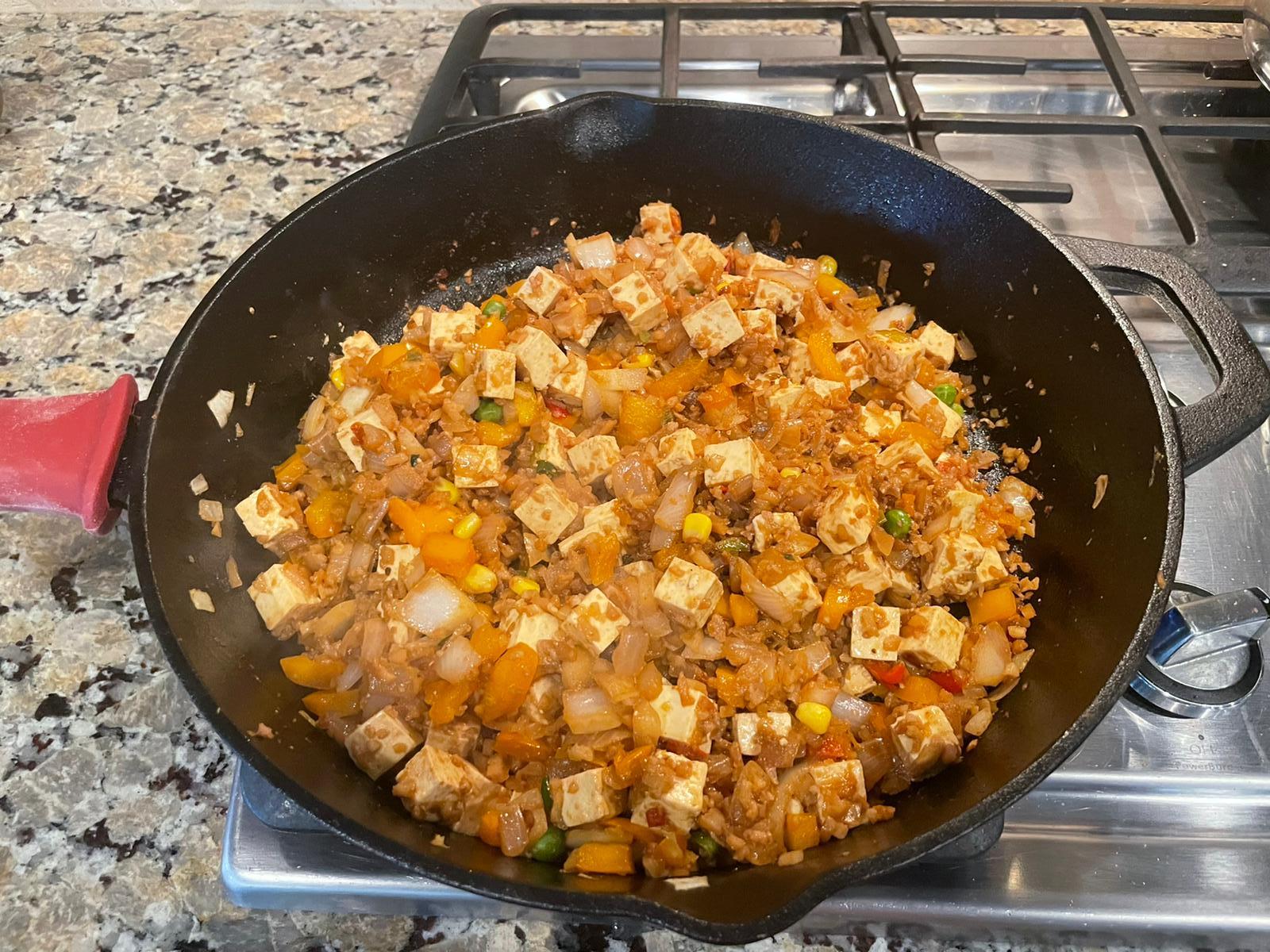
- December 4, 2021
If you’re bored of having regular boiled eggs and omelettes, this unique dish: poached eggs with seasoned yogurt would be a delicious alternative for you, you can suit your style with the spices and also add some boiled/sautéed veggies on side to make a complete meal out of this, happy feasting!
- December 4, 2021
This amazing peanut green soup takes very good care of your protein and minerals intake. You can customise it to give it an italian, thai or chinese twist by changing the spices.
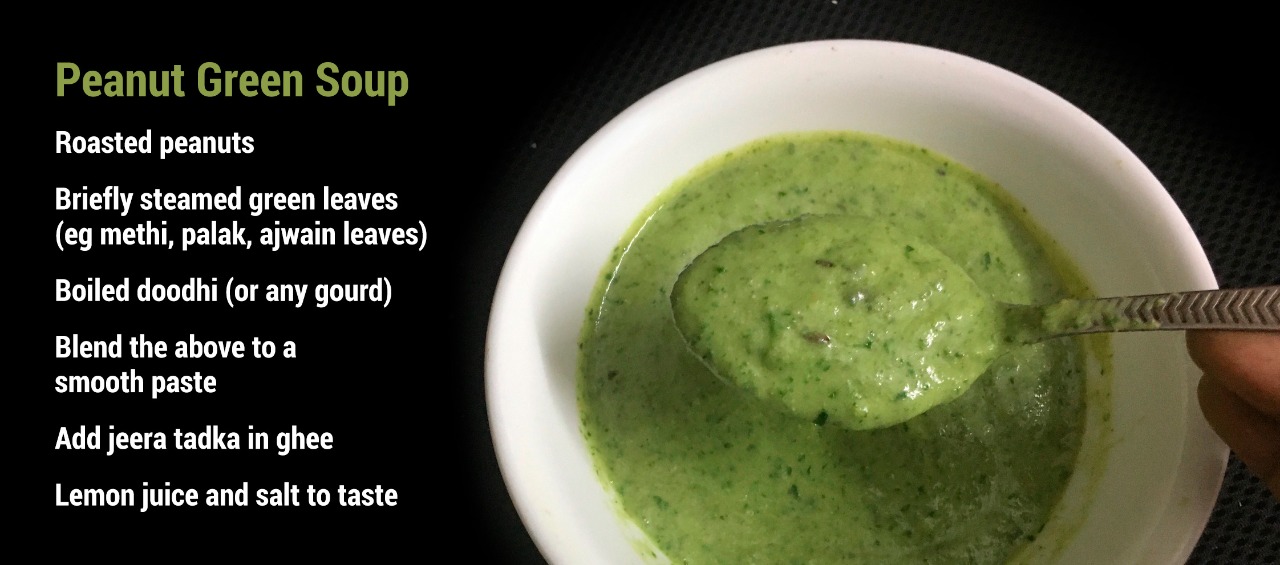
- December 4, 2021
Many people are struggling with a nutritious breakfast since most Indian breakfasts are high on carb. Having 2 eggs is not enough for many. You still feel hungry. So sharing this recipe, Frittata – an egg-based Italian dish similar to an omelette or crustless quiche or scrambled eggs, enriched with additional ingredients such as meats, cheeses, or vegetables. Keep the potatoes out. You can add cauliflower and sausages as well. You can also keep the pan on low flame and cover it instead of baking. I add the malai from the milk and don’t add milk. Milk increases the liquidity and takes time to cook. Enjoy!!!! And do share your experience with making and eating the frittata.
- December 4, 2021
Ways of Including Vegetables in our Nutrition. We are targeting 7 to 10 tea cups of greens. (Measured Raw, consumed Cooked) Remember Greens are the healers and provider of potassium and other minerals and trace minerals. They are low in calories and you can add green with lots of saturated fats and protein to make full Nutritious meals. 1. Cooked Vegetables without aaloo. Peanuts or Paneer can be replaced with aaloo. 2. Vegetable Stock, सारे डंठल इस्तेमाल कर सकते हैं। slow cooking 3 to 3 hours and strained. 3. Green Smoothie/Juice without any fruits 4. Chutney of various kinds 5. Soups 6. Salads 7. Sauteed or Cooked Vegetables 8. Protein cooked with Vegetables. Like daal or egg or meats. 9. Bone Broth with vegetable stocks. 10. Fermented vegetables. Kanji water, pickles, sauerkraut, kimchi, kombucha are variety of names of ways. 11. Use green peels of most vegetables especially cucumber, lauki, kaddu, beet tops. 12.. Supplements Wheat grass powder, Sea Kelp and Dim are three ready to use ways of consuming greens. 13. Green Teas Caution No aloevera please. No new uncooked vegetables. Try one new veggie at a time. Par Boil or Cook vegetables. Use 2 lemon or 2 amla to avoid oxalate stones. People with hyper thyroid (difficulty gaining weight) avoid Sea Kelp.
- October 9, 2021
My travel kit has 1. Supplements together in one box. Nutritional yeast in another small box. ACV tablets or Betine HCL. Including laung and garlic. 2. Ghee 3. Butter cubes 4. Cheese cubes 5. Peanuts 6. Roasted Nuts n Seeds 7. Black Salt and Chaat masala and black pepper 8. Wheat grass powder box 9. Coffee Tea and milk powder sachet for emergency 10. A good mug and a spoon 11. My pencil colors and drawing copy 12. Books 13. My attendance and Journaling copy 14. Skipping rope and a mat like big polythene for anywhere yog. 15. Water bottle and some laung 16. My travel Gods and Maala. ❤️😃❤️
- October 8, 2021
Please don’t use aloevera every single day. Aloe Vera is good when used externally like some people take out its gel and apply on their head for hair growth / for better quality of hair. Some people use it on their face or on other body parts. Daily external use is fine. But before consuming it internally or for that matter any ayurvedic Ingredient , pls consult an ayurvedic doctor / practitioner and take proper quantity accordingly. – since aloevera is a very potent herb, and cleaning agent….. Not advisable to take everyday. It will wash away all minerals and vitamins. Tulsi and Giloy are fine to take everyday Ask people who practise medicines. Asking right question from right people is wisdom. Don’t use herbs and medicines without asking the right person.
- October 7, 2021
Steps to improve HDL HDL is high density lipoprotein, it brings back unused cholesterol and triglycerides back to liver for synthesis of steroidal hormones. A good heart is when triglycerides vs HDL ratio is 2 or less than 2. Till 5 it’s ok….More than that calls for attention. (Not worry……Worry will bring cortisol and that will make situation worse) A few steps that we are already practising at CqMyOE 1. Low Carb 2. Good saturated fats and avoid trans and poly unsaturated oils. 3. Minimise fat plus high gl carb combinations 4. Lots of fibre greens 5. 2 to4 gram Omega 3 everyday 6. Medium Chain Triglycerides like coconut oil and coconut 7. Regular zone 1 exercises 8. Keeping PNS activated. 9. Sleeping well A few more things that can be added for good HDL. 10. Niacin vitamin 11. Magnesium 12. Pistachios (total nuts except peanuts not more than 20) Manage Insulin and Cortisol, 80 pc shall be taken care of.
- October 6, 2021
Essentials to take care in the body The body, by chemistry is made up of organic compounds, basically: Carbon, Hydrogen, Oxygen and Nitrogen. Hence it can synthesise a lot of compounds required by using these elements itself, however there are few essential fatty acids, amino acids and minerals/vitamins which can not be synthesised and which we need to give our body in dietary form only. Essential fatty acids: Omega 3 and Omega 6 Omega 6 sources: Almonds, pistachio, Pumpkin seeds and pumpkin seed oil Omega 3 sources: Flax and chia seeds, Seafood, Walnut It is very very crucial to notice that roughly through the food we consume, we can max maintain the Omega 3: Omega 6 ratio as 1:4 We recommend Flaxseed oil (veg) Cod liver oil or fish oil (non veg) For 2 to 4 gram omega 3 everyday. Omega 6 is present in so many things, hence really don’t need to be worried about it.
- August 22, 2021
Bile is made by liver and, stored in gallbladder in concentrated form. Bile juice is released in small intestine to make the environment alkaline Fat metabolism is done in this alkaline environment For people who do not have a gall bladder, sometimes need to take external bile salts. Not usually available in India, closest supplement enzymes researched and added here: https://cqmyoe.com/resources-page/ If somebody doesn’t face any problems with their metabolism, it’s okay to not take the enzymes.
- August 16, 2021
You are forgetting how far you’ve come. Catching a ray of light in a dark room, can take you to the sun. However feeble, catching the right direction and taking it on will help you go a long way. Capture the glimpse of positives and accentuate it. Acknowledge your efforts and achievements, however small and big, and be assured if aligned, it will eventually get you what you want. We’ve all set out to change our lives with big plans, bold ideas, and brilliant ambitions. And too often those resolutions and plans have lasted for a day or two before real life swoops in and we are back to normal. This is the time where we underestimate how consistency beats intensity. There is unmatched power in small, systematic and continuous practices which accumulate into amazing rewards. All the little things, like expressing gratitude, smiling, reading, having lemon, water, garlic, cod liver oil and so many more, if you stick with them, they pay off. In moment of crisis, identify two things, however small, and keep doing them to maintain consistency in the direction of Conquering your Own Everest.
- August 16, 2021
Default Mode Network When we are daydreaming or not doing anything, the brain shows consistent activity in certain regions of the brain, which are classified as DEFAULT MODE NETWORK. As much as 45% of our time is spent in DMN. One of brain areas making up the DMN is Amygdala which is largely responsible for the fight-flight mode in body, more active in situations of stress and anxiety. Task Positive Network TPN is responsible for being present to the moment as opposed to rumination in DMN. This is the network of the brain that is activated when we are actively paying attention, focusing on the task at hand, using short-term memory, and in the present moment. Paying attention and observing what is going on with any of the senses activates the task-positive network. Also, being compassionate and kind, whether to oneself or others, activates the TPN.
- August 12, 2021
When you are trying to get fat adapted, which means having 50-70% of your total calories from pure fats. There is a shift happening feel in your body from glucose metabolism to fat metabolism, which might cause you to feel sleepy more than usual. That is absolutely alright. This brief period of mechanism shift will require you to rest more, each time you move from fat to glucose metabolism or vice versa. And it is very normal to happen. Different people experience it for different days. It might take a week for some people, for other it can also take around 2 weeks to settle. To focus on healing, put extreme focus on sleep. If you have a privilege and opportunity to sleep more, always grab it and rest more.
- August 11, 2021
After the awareness of concepts like insulin resistance, fat+carb being harmful, there are different thought processes that we can fall prey to, like: Having kheer, paratha, roti, rice or any other high GL food excuses us from having Ghee/pure fats The basic concept is anyway violated by the high GL, not together, but it is still important to continue making a habit of having pure fats. For people new on the program, you will not quit carbs entirely one fine day and start having pure fats. If you want to sustain, it will be a slow and simultaneous process of decreasing high GL carbs and increasing pure fats. Try these: 1. Decrease the quantity and frequency of high GL carbs like Roti, Rice, Sugar that you regularly have 2. Try to have any carb in only one meal of the day, instead of all meals 3. Always plan and start your day with high protein and/or fat food, which will cause less cravings and more satiety. 4. Put efforts in designing your breakfast. Manage the prep one night before. 5. Design one bowl meals. Have ghee first, then have paneer, protein etc, followed by salads, then have any rice/roti or high GL carb after everything. This way you get the most energy dense food.
- August 9, 2021
If your blood report indicates no problems in Kidney, it’s good to have around 70g protein everyday Since people with Diabetes and high Insulin Resistance are prone to kidney issues, they can aim at 40-45g per day. For people into sports and athletics, they can take little more than 70g. Lean proteins and powders not recommended at all unless it’s full egg protein powder. Whole protein, with fat should be consumed. All natural sources of protein are whole proteins. For people having 3 meals, have 25-30g protein in each meal. If you have less protein or less meals, please adjust accordingly. Proteins support pancreas in secreting glucagon which is anti-insulin hormone and also helps in fat burning, supports in healing Insulin Resistance as well. Protein sources for vegetarians: Paneer, Cheese, Peanuts, Dal, Nuts, Seeds, Non-GMO Tofu People consuming non veg on a regular basis can take care that they don’t have excess of protein consistently.
- August 7, 2021
Aerobic: Exercises in which oxygen is used for energy conversion. No oxygen deficiency, mostly Zone 0-1 exercises. Anaerobic: Exercises in which there’s lack of oxygen, body uses another pathway for energy conversion. Oxygen debt, lactic acid is produced. Extreme fatigue after too much production of lactic acid. Lactic acid needs to be neutralized by massages, Epsom salt etc otherwise body experiences lot of pain and fatigue. Aerobic exercises are for longevity, can always do, without pressure and debt of oxygen. For functional fitness, building strength and endurance, Aerobic exercises are really good. Examples of aerobic exercises: Slow walks, Stairs, Occasional treks
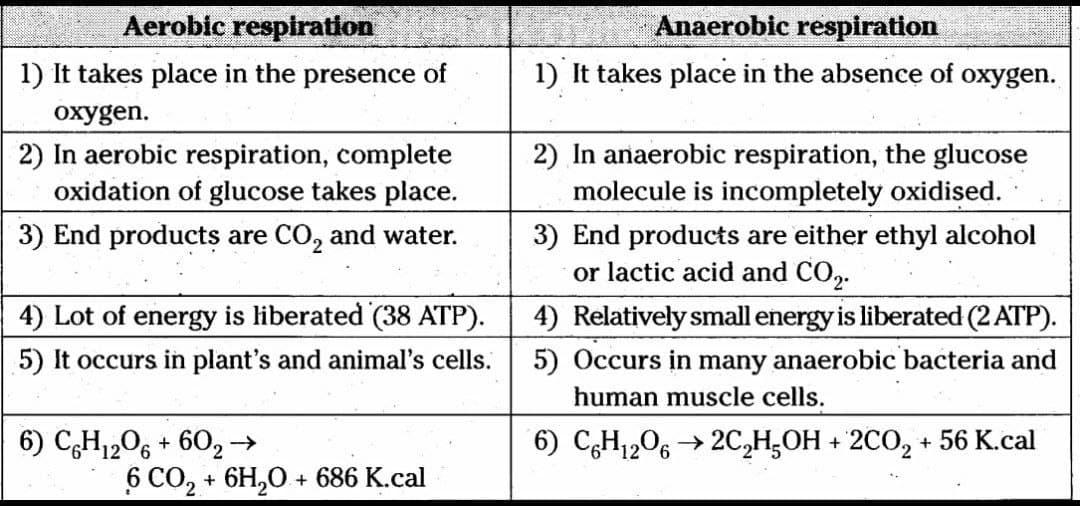
- August 6, 2021
1. Immune system is repressed in presence of Cortisol. Happy hormones makes immune system flourish, primarily Serotonin and Dopamine. Dopamine doesn’t require huge accomplishments, just do small tasks you are procrastinating -Organise -Gratitude -Small tasks Serotonin makes you feel satiety, gives fulfilment feel for a long time -Spend time in sunlight -Good healthy food like ghee -Reading something good 2. Move from Sedentary to Moderately Active lifestyle: Use standing desk Move around on blip blip Do stairs Have variety of activities throughout the day.
- August 5, 2021
Different parts of healing metabolism 1. Peristalsis movement: Peristalsis is a series of wave-like muscle contractions that move food through the digestive tract. As we shift from having an active lifestyle to a more sedentary lifestyle, this movement weakens which causes us to have digestive issues and weaker metabolism. Practising Agnisaar and subsequently Nauli are the ways to help the body in peristalsis. 2. Building up adequate stomach acid: Due to nutrient deficient diets we had been eating, chronic stress and excessive antacids/medications that we consume, the body decreases the production of stomach acid resulting in lots of indigestion issues. Having enough calories and ACV helps a lot in building up stomach acid. 3. Enzymes for fat metabolism: Fat is metabolised in alkaline environment in the small intestine. There are different types of enzymes required to digest fats. Liver, gall bladder and pancreas secrete bile salts and lipases to help breakdown fats and derive energy from them. 4. Gut microbiome: Our gut has both good and bad bacteria, probiotics are the good ones and help the body in break down and digestion of an important component of our food which is fibre and green veggies. There are 100 trillion microorganisms in an average body which is destroyed by eating packaged food with added preservatives. We must actively include fermented food in our lifestyle to restore the gut health. 5. Oxygen intake: Having more oxygen intake gives the body a chance to produce more energy and also relax at the same time, also helping in better absorption of vitamins and minerals. 4228 deep breathing, 4228 jumps, 4228 while climbing stairs helps immensely in increasing lung capacity for more and richer oxygenation. 6. Vitamin D: Vitamin D plays a significant role in the regulation of calcium and maintenance of phosphorus levels in the blood which is crucial for bone health. It also holds crucial in fat metabolism and activating certain hormones for full benefits of absorption of nutrients you are eating. Spending time in sunlight is the best natural source of getting Vit D. If you’re diagnosed with deficiency, supplements help a lot in restoring the levels. 7. Insulin Resistance: On top of all these, Insulin Resistance is what we want to reverse and heal by improving our metabolism slowly. More energy, better brain clarity, less risk of lifestyle diseases and excess weight loss are some of the benefits of healing resistance. It can be healed by having balanced meals with fats, protein, carbs and greens, fasting, yog and dhyaan.
- June 27, 2021
What’s the logic behind having 12 spoons of ghee? The concept is to ideally take 70% of daily calorie requirement from saturated fats. To sustain our new lifestyle, we aim at a maintaining minimum intake of at least 50% of daily requirement from pure fat calories, balancing the rest with proteins, carbohydrates and green vegetables. 12 spoons of ghee accounts for approx 50g of ghee or 450 cal which is good way to get half the requirement of saturated fats sorted in just one shot. Ghee and Coconut Oil are the best kinds of saturated fats available to us, they are anti-inflammatory in nature and also contain lots of vitamins like Vit A, E and K. Ghee is a superfood, and taking a mouthful of ghee (approx 50g) daily is highly recommended in Ayurveda to heal a lot of ailments in the body.
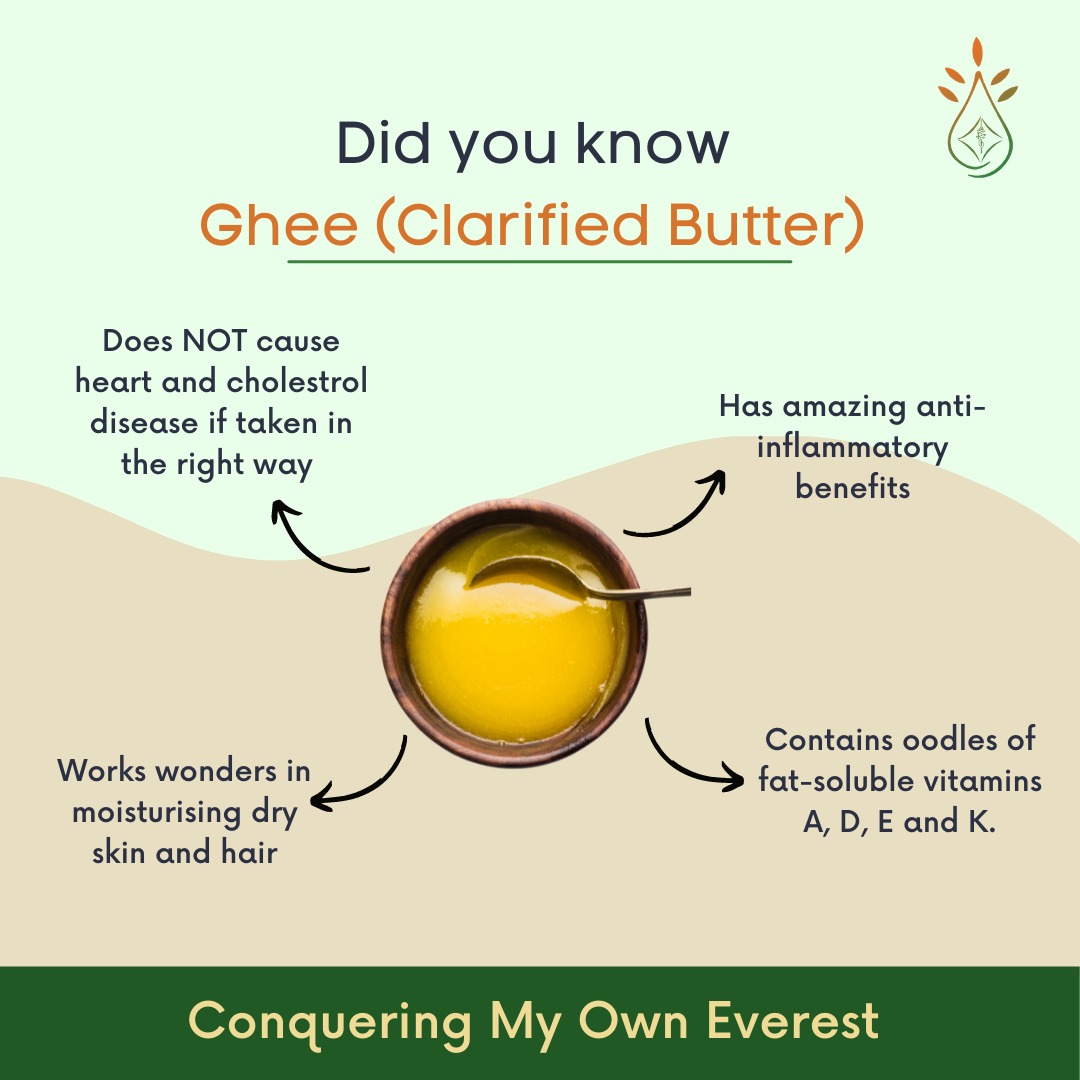
- June 24, 2021
When do we use glucose fuel vs fat fuel? In our sedentary lifestyles, we need the kind of energy that fuels us slow and steady throughout the day instead of something that gives us energy in spurts and leave us tired soon after. The former is what we get through fat fuel, that is when our body burns fats for producing energy. The latter is glucose fuel, which gives a sudden energy rush whenever you eat anything that converts to glucose, IF you are not insulin resistant yet. If you are insulin resistance, your cells are not sensitive to receive glucose for conversion to energy and you experience constant low energy. We spend 90% of our lives in resting zone or Z1, very small part in Z2, hence fat energy is the best energy for slow, steady and sedentary lives where most of our work requires good clarity in brain function. As the zone increases, the need for glucose energy also increases.
- June 22, 2021
Most atoms are composed of electrons, protons, and neutrons. Most atoms have paired electrons to balance each other out. A free radical has unpaired electrons. That is, an electron on one side but not on the other of the atom. Picture a spinning disk with a weight on just one side. It would be lopsided, and create a lot of damage. But if we balance it out with a weight on the other side, it would spin symmetrically. Free radicals create damage to your cells; to the DNA and the mitochondria. They create a lot of oxidation, just like what happens to your car when it rusts. It can happen in your body too. Some examples of things that give off free radicals are radiation, different chemicals, hydrogen peroxide, and free iron or free copper. Free iron and copper are normally bound to protein, but dangerous when they’re free. As well, high levels of sugar create a lot of oxidation in your arteries and tissues. Antioxidants donate an electron to neutralize the damaging effects of the free radicals and improve your health. You get these in super foods, leafy greens, and cruciferous vegetables. The problem is that the antioxidant now becomes a free radicle, which then borrows an electron from another antioxidant—and so on and so on. This is why antioxidants are a network. So, avoid the things that cause oxidation, and focus on consuming foods containing antioxidants that neutralize and repair the damage caused by free radicals.
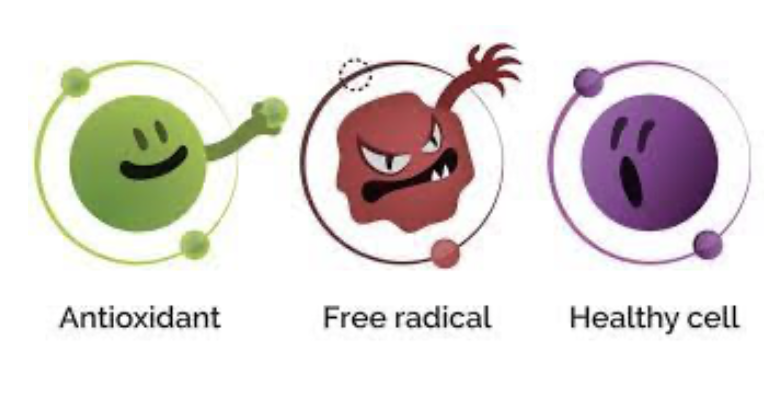
- June 20, 2021
Why are Zone 1 exercises most recommended for functional fitness? You spend more than 90% of your life in heart rate zone 1, maybe some part of zone 2. Your heart rate is a very good indicator of the intensity of exercise. Learning to recognize the subtle shifts in your breathing can be useful and rewarding. This is often referred to as a “conversational pace.” You will be able to speak in complete sentences. The pace should feel relaxed and easy. To find the upper end of this zone, start by exercising slowly while breathing through your nose only. As you increase the intensity/speed gradually, note the point at which this nose breathing becomes noisy and laboured. That is the upper end of Zone 1. Some of the activities that can be done in Z1 are slow walks, Z1 and stair climbing. Establishing mind body connection along with paying attention to breathing, will enable you to gain more functional fitness in long term. For Z1, the preferred fuel for the body is fat fuel, which provides slow and continuous energy, helping you to stay thoughtful and mindful throughout the day. The idea is to get more blood to the legs without adding any stress. Your body should feel better off doing it, if it feels worse, then you either went too hard or need to take some more rest and correct something in your lifestyle and food first. Spending more time in Zone 1 heart rate improves endurance resulting in increase in mitochondrial mass which is basically increase in size and number of mitochondria within the trained muscle hence preparing you to have more energy. Even the world’s elite endurance athletes spend more than three-quarters of their training volume at this low intensity, so do not let its ease fool you into thinking that it does not offer significant benefits.
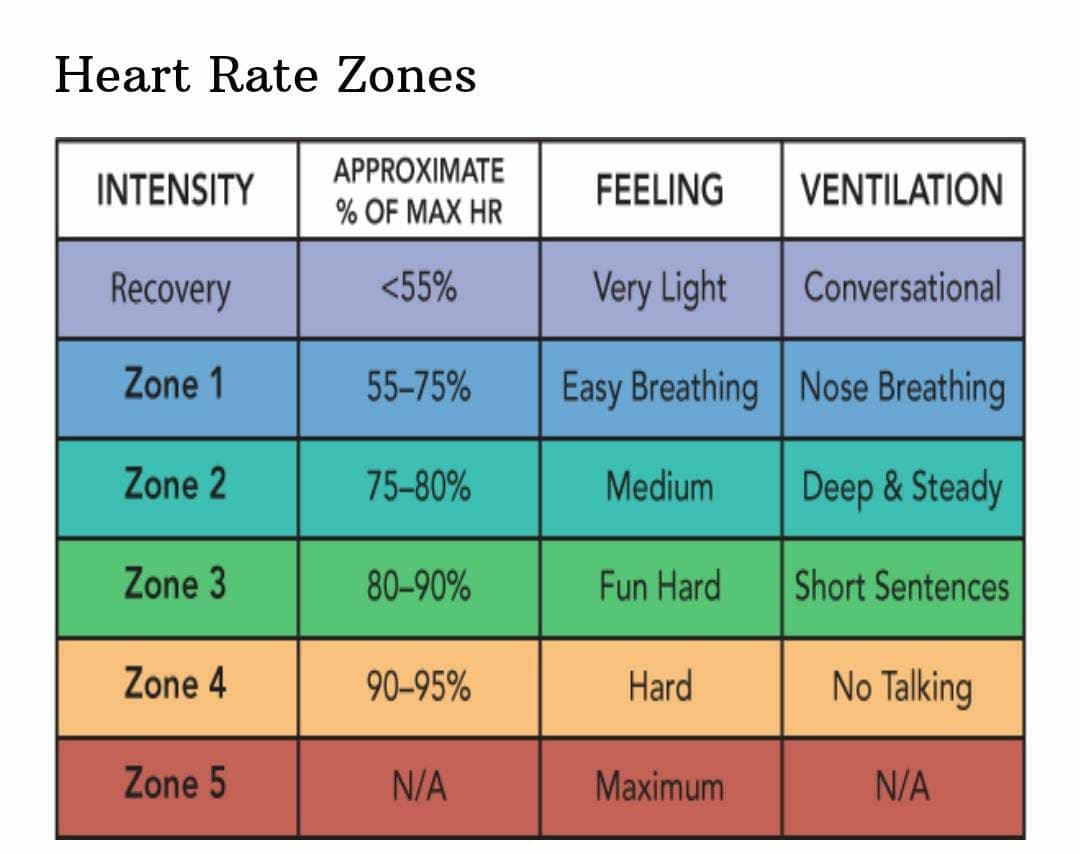
- June 8, 2021
What is small intestine bacterial overgrowth (SIBO)? SIBO stands for small intestine bacterial overgrowth. Here’s what happens: normally, your friendly bacteria live in your large intestine. But if they migrate to your small intestine, the microbes start fermenting your carbohydrates and eating your nutrients — especially B12, iron, and bile. Bloating, abdominal pain and gas are some of the side effects. SIBO can develop because of many things. One common reason why it can occur is if you don’t have enough stomach acid to kill off microbes, which arrive with your food then can pass through to the small intestine. Here’s what you can do if you have SIBO: 1. Stop the greens first thing for 3-5 days. Especially raw greens, cooked greens as well to minimum. 2. Do intermittent fasting to give your digestive system a chance to reset and clean itself out. Have 1 spoon castor oil, drink warm water over it and fast for 20-22 hours. Open your fast with something very light and easy to digest like dal paani with some ghee. 3. Avoid prebiotics and probiotics for some time, you can also take herbal antibiotic such as oregano, thyme, or cloves to create an antimicrobial environment. 4. Take apple cider vinegar regularly. If severe condition, you can get pills that combine betaine hydrochloride with apple cider vinegar. After you condition improves, start including fermented food to support your gut health.
- June 5, 2021
A simple 10 min sequences of 4 second exercises to bring in mind-body connection and activate parasympathetic nervous system.
- May 23, 2021
Which laxatives are to be used in different cases of constipation? A lot of times, while changing lifestyle and eating habits, especially while introducing new and raw greens, it is not uncommon to face constipation sometimes. The key is to identify what kind of discomfort you are facing and try out any of the following solutions accordingly. Following are short term sos solutions. Long term solutions are about fixing metabolism components like stomach acid, microbiome, peristalsis movement, potassium and many more things. As Sos try these. One at a time. 1. Isabgol/Psyllium husk: If you feel, you have issues right in formation of stool, because of lack of fibre intake, the immediate solution is to take isabgol with some water. 2. Triphala: If the stool is stuck to the walls, Triphala can work great in getting it together. 3. Castor oil: Castor oil really helps in case of hard stools or when you have issues in passing the stool, take a spoon of castor oil and drink warm water over it, you will have a good motion soon. Also important to note, in the case of greens, since they are complex carbohydrates and take time to digest. Whenever you face digestive issues, it is good to look at your meals for the past 72 hours instead of only the previous day. Having fermented food also helps a lot in keeping the gut healthy. For long term practice to prevent constipation: practice peristalsis movement, regular intake of ACV, water intake and optimum intake of potassium through green vegetables. However, when you already are constipated, please avoid raw greens completely until you have better motions.
- May 22, 2021
Gluten is the protein part of wheat or grains that causes celiac(an inflammatory condition of the gut). A lot of people are sensitive to gluten that causes inflammatory problems not only with the gut but also in the thyroid and many different parts of the body. It is very essential not to consume gluten. When you remove the gluten you’re increasing the concentration of carbs in that grain and that will spike the blood sugars more and causes more insulin which is also going to cause more inflammation.
- May 17, 2021
Diet coke, coke zero and coke zero sugar have the same ingredients except for other sweeteners. It has aspartame which affects the gut, increase the risk for insulin resistance and diabetes. It also has caramel colouring where they heat sugar with an ammonia compound to produce an end product called AGE or Advanced Glycation Endproducts, which creates sticky proteins in the body.
Watch out for disguised names of sugar on your food labels next time!
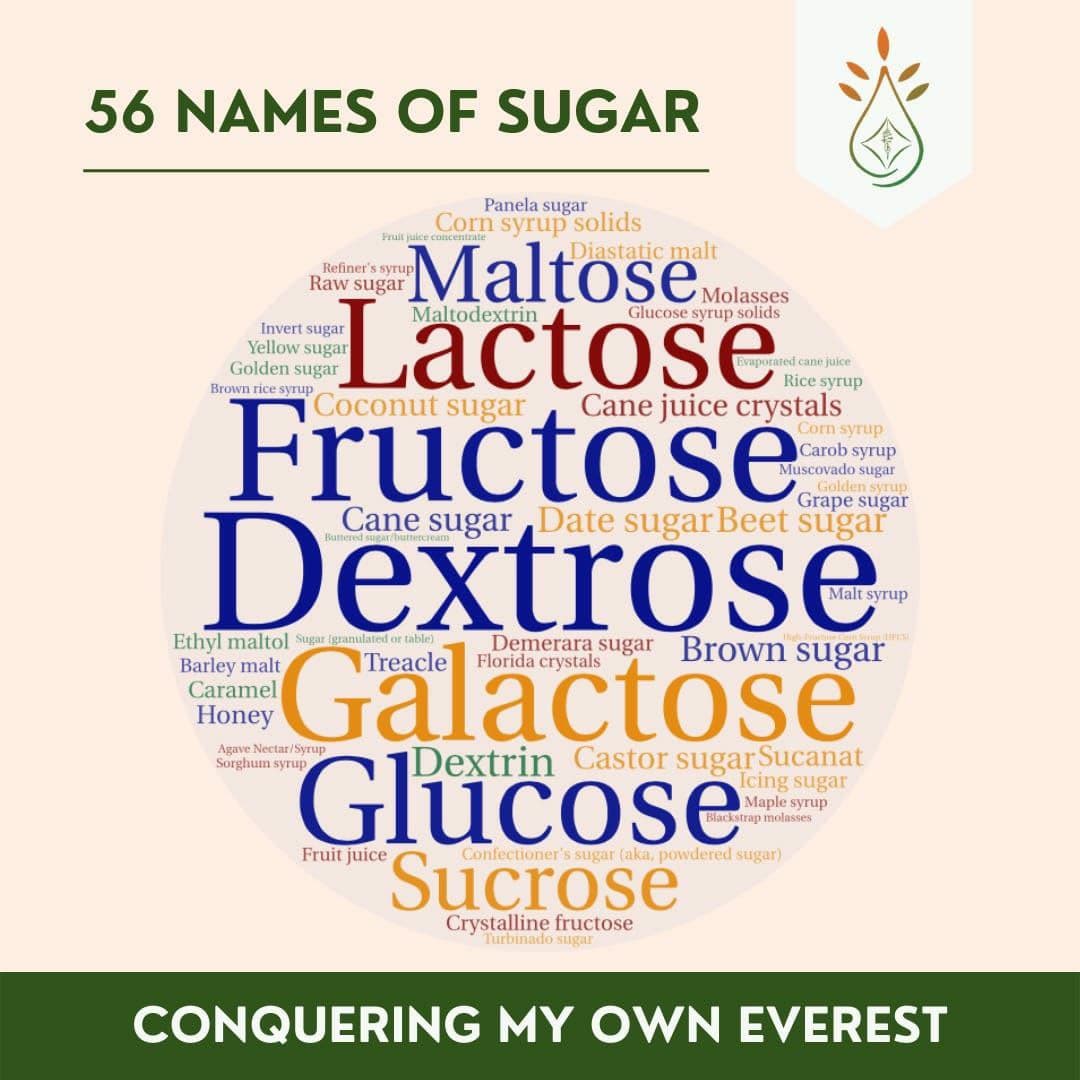
- May 15, 2021
